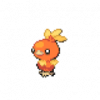The name pretty much explains it. Which is better, pros cons, and whotch should I use for my Formica and mermica colonies?
- Formiculture.com
- Forums
- Gallery
- Members
- Member Map
- Chat

Hmm, what about layering both, sanded and unsanded grout?
Ant Keeping →
General Ant Keeping →
A Nest IdeaStarted by cooIboyJ , Mar 22 2025 |
|

|
||
Ant Keeping →
General Ant Keeping →
What do I use for heating?Started by RainbowtheDragonCat , Mar 13 2025 |
|

|
||
Market Place →
General Market Place →
Trade: 3D-Printing Service for your Queens/Colonies (Los Angeles, CA)Started by JonathanH , Mar 4 2025 |
|

|
||
Market Place →
General Market Place →
Ender Ants: Naturalistic Formicariums & MerchandiseStarted by Ender Ants , Feb 7 2025 |
|

|
||
Ants & Myrmecology →
General →
Starting off a shopStarted by OwlThatLikesAnts , Feb 3 2025 |
|

|
0 members, 2 guests, 0 anonymous users